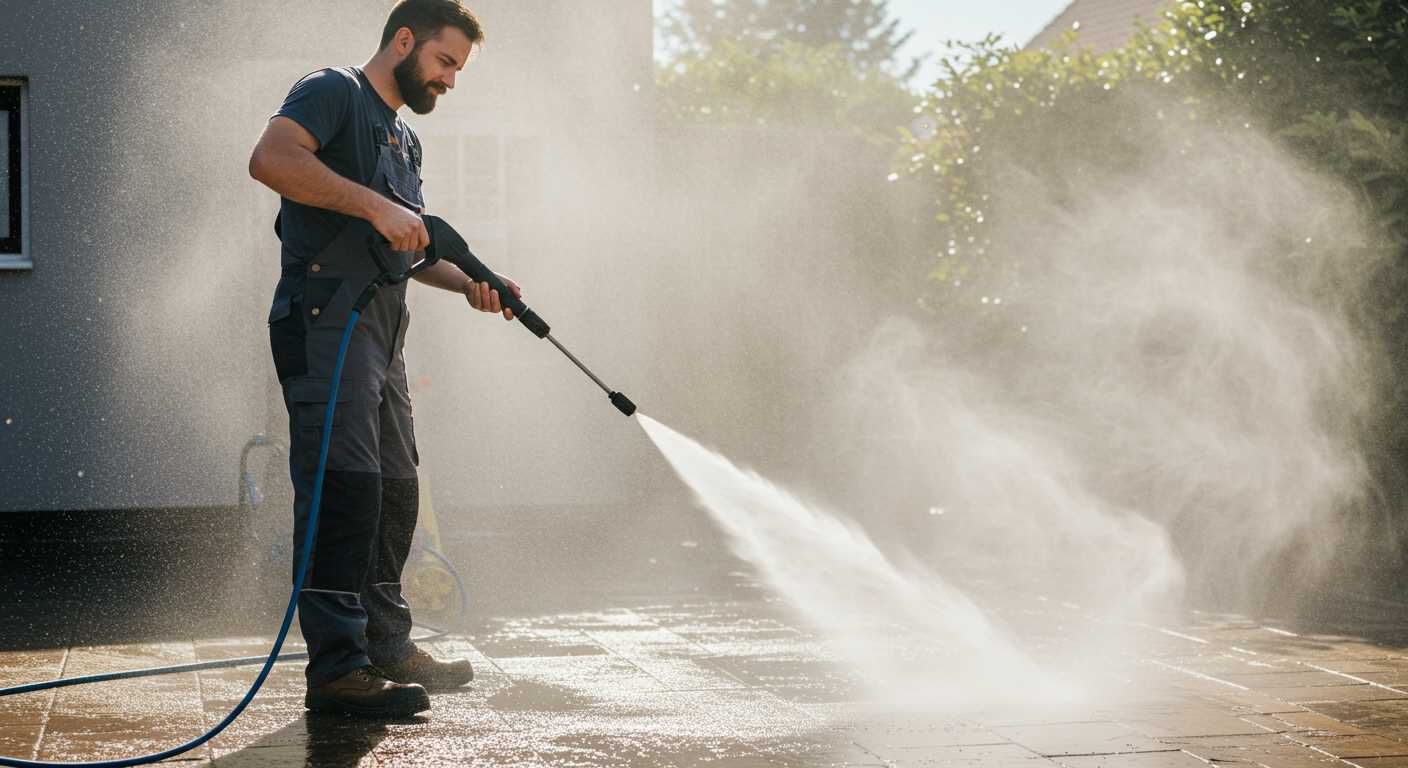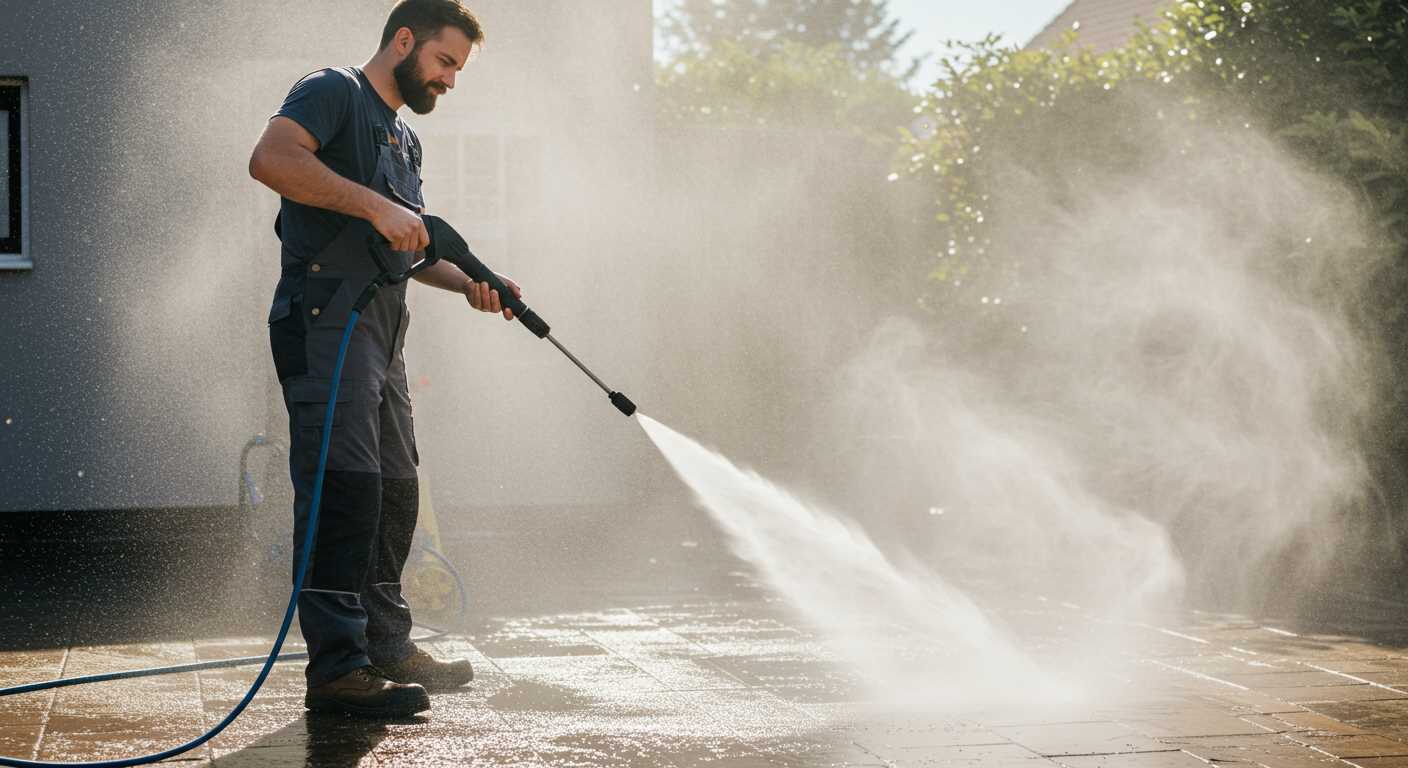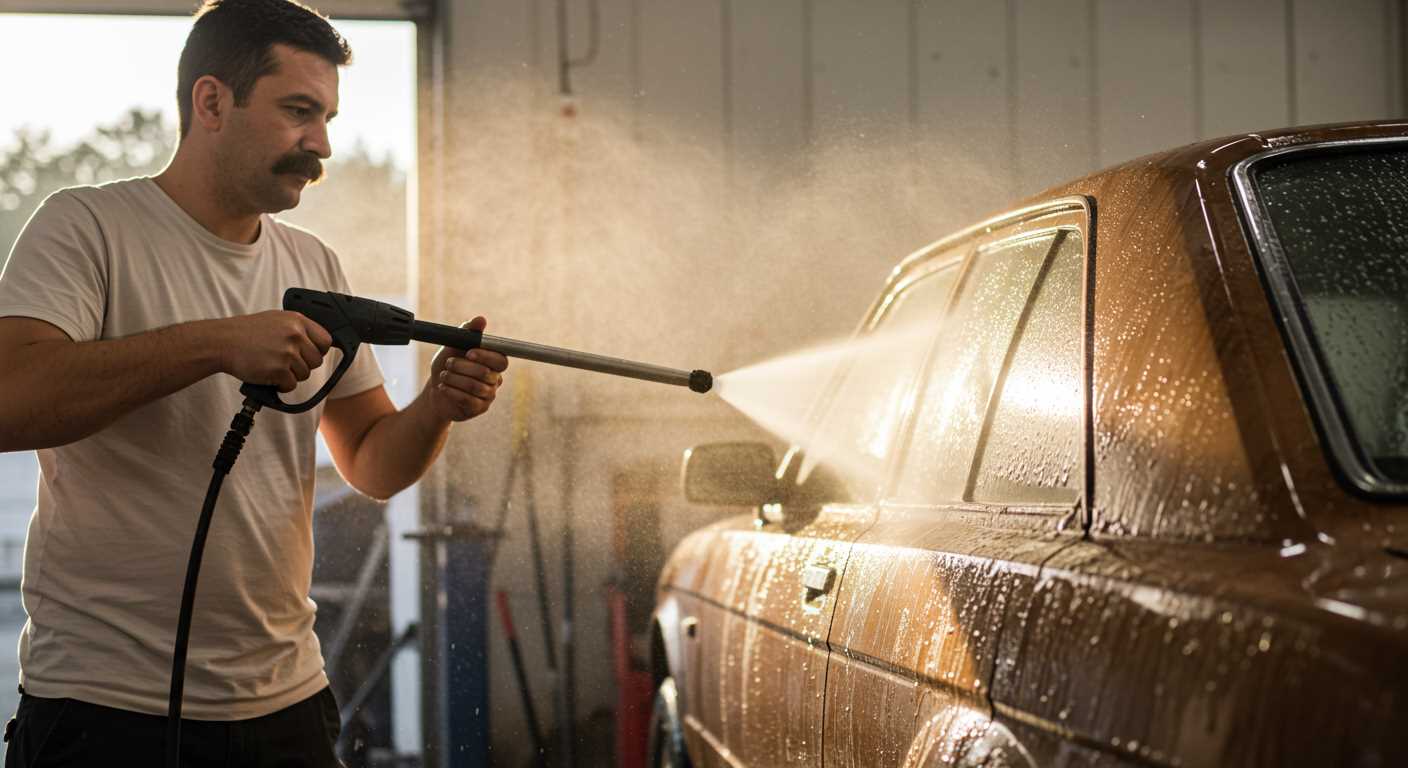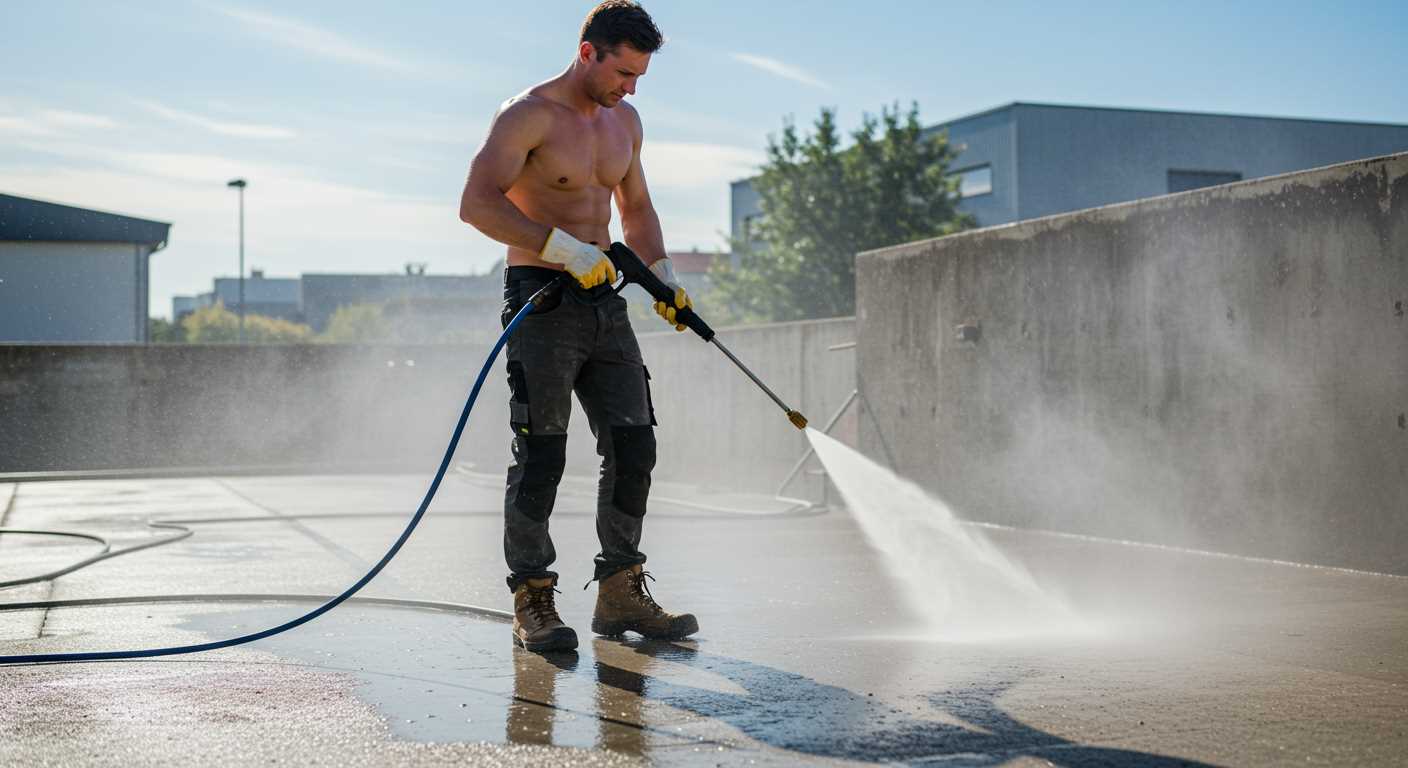




Ensure a firm grip on the handle to maintain control during operation. A steady hold not only enhances comfort but also prevents any potential mishaps. I recall a time when I neglected this simple advice, resulting in an unexpected spray that soaked my shoes. Learning from that experience, I now prioritise a solid grip to avoid any surprises.
Adjust the nozzle appropriately according to the task at hand. Different settings can dramatically alter the intensity and spread of the water stream. I’ve found that using a narrow jet for stubborn stains on concrete surfaces yields remarkable results, while a wider fan pattern works wonders on delicate surfaces like wood or glass. Adapting the nozzle ensures efficiency and protects the items you’re cleaning.
Keep a safe distance from the surface being cleaned. I’ve learned the hard way that getting too close can cause damage, especially on softer materials. A distance of about two feet typically provides the right balance between power and safety, allowing for effective cleaning without risking harm to the surface.
Always keep an eye on the water supply and pressure levels. Running low on water mid-task can lead to uneven cleaning results. On one occasion, I was so engrossed in my work that I didn’t notice the supply had dwindled, resulting in a patchy finish that required additional effort to correct. Regular checks can save you time and frustration.
Finally, don’t forget to maintain your equipment. Regular cleaning of the nozzle and checking for clogs can prevent operational issues. I’ve encountered my share of blockages, often at the most inconvenient moments, which only reinforced the importance of routine maintenance. A little care goes a long way in ensuring longevity and consistent performance.
Choosing the Right Pressure Washer Trigger Gun
When selecting a nozzle mechanism, consider compatibility with your cleaning unit. I once encountered a homeowner frustrated because the attachment didn’t fit their model. Always check the specifications or user manual to avoid such issues.
Evaluate the materials used in the construction. I’ve seen plastic components break under high stress, while metal variants often offer durability. A robust design means fewer replacements and consistent performance.
Adjustable flow settings can enhance versatility. During a recent project, I switched between different spray patterns to tackle various surfaces effectively. A model with multiple settings allows you to optimise the cleaning for delicate areas and tougher grime alike.
Look for ergonomic designs. I’ve held numerous models, and the comfort of the grip can make a significant difference during extended use. A well-designed handle reduces fatigue, especially when you’re tackling larger jobs.
Weight is another factor. Lighter models are easier to manage, but make sure they don’t compromise on sturdiness. I’ve used some heavier units that provided stability, but on long jobs, a lighter option was a relief.
Finally, consider the brand reputation. I’ve had great experiences with reliable manufacturers that offer excellent customer service. Investing in a reputable brand often leads to better support and quality assurance.
Understanding the Safety Features of the Trigger Gun
Always check for the safety lock feature before operating. This prevents accidental discharge and is particularly useful when transporting the equipment. In my experience, I’ve seen many users overlook this simple yet critical aspect, leading to unexpected mishaps.
- Safety Lock: Engaging this mechanism ensures the handle remains stationary, preventing any unintentional activation. It’s a must for safe storage.
- Pressure Relief Valve: This component reduces the risk of overpressure situations. After finishing your task, releasing pressure through this valve is essential to avoid sudden bursts when disconnecting hoses.
- Ergonomic Design: A well-structured handle not only enhances comfort but also provides better control during operation. I’ve had instances where a poorly designed grip led to fatigue and loss of control.
- Built-in Water Filter: Protects the internal components from debris, ensuring longevity. I always recommend checking this filter regularly to maintain optimal performance.
During my years in the industry, I’ve seen how neglecting these features can lead to accidents. Always read the user manual thoroughly to understand the specific safety mechanisms of your equipment. It’s not just about efficiency; it’s about protecting yourself and others while you work.
Lastly, wearing appropriate personal protective equipment, such as goggles and gloves, complements the safety features of the device. I learned this lesson the hard way–one miscalculation led to a minor injury that could have easily been prevented.
Connecting the Trigger Gun to the Pressure Washer
First, ensure that the machine is powered off and unplugged to avoid any accidental activation. Begin by locating the quick-connect fitting on the end of the hose that leads to the cleaning device. This is typically a simple push-and-click mechanism.
Align the fitting of the handle with the corresponding socket on the machine. Push firmly until you hear a click, indicating a secure connection. If your model has a safety latch, ensure it is engaged to prevent accidental disconnection during operation.
After securing the connection, check the hose for any visible damage or wear. A compromised hose can lead to leaks or reduced performance. If everything appears intact, connect the other end of the hose to the water supply. Make sure to use a compatible fitting to avoid leaks.
Testing the Connection
With everything connected, turn on the water supply and check for leaks at all connection points. If water is escaping, tighten the fittings or replace any damaged components. Once you confirm there are no leaks, plug in the unit and turn it on.
Before starting your cleaning tasks, pull the handle to release any air trapped in the system. This will ensure a steady flow of water when you begin. Always maintain a firm grip on the handle during operation, as water pressure can cause sudden movements.
Troubleshooting Common Issues
If you encounter difficulties while connecting the equipment, refer to the manufacturer’s manual for guidance. Some models may have unique connection methods or features. In my experience, if a connection seems overly stiff, double-check that you are aligning the fittings correctly, as forcing them can lead to damage.
| Issue | Solution |
|---|---|
| Water leaking from connection | Ensure fittings are tightened; check for hose damage |
| Air in the system | Pull handle to release trapped air before use |
| Unit does not start | Check power supply and ensure the machine is plugged in |
Adjusting the Pressure Settings on the Trigger Gun
Begin by locating the pressure adjustment knob, typically found on the handle or near the nozzle. Turning this knob clockwise usually increases the force, while counterclockwise reduces it. Whenever I tackled delicate surfaces like painted wood or glass, I would gently dial down the pressure to avoid damage. It’s a straightforward task, but it requires attention to detail.
Always test the adjusted settings on a small, inconspicuous area first. I remember the time I underestimated the power on a brick patio. A simple adjustment saved me from costly repairs. For tougher stains, like oil or grime on concrete, I’d crank it up. However, too much pressure can lead to etching, so finding a balance is key.
Some models come equipped with interchangeable nozzles, each designed for specific tasks. Opting for a wider spray angle reduces intensity, while a narrow stream concentrates the force. I often switched to a 25-degree nozzle for general cleaning and reserved the 0-degree for stubborn spots. Familiarising yourself with these options can significantly enhance your cleaning efficiency.
Finally, remember that the type of detergent used may also affect the settings. Certain cleaning solutions work better at lower pressures for effective application, so adjust accordingly. I’ve had great results by combining the right detergent with a lower setting for a thorough cleanse. Keep experimenting until you find what works best for your projects.
Using the Trigger Gun for Different Cleaning Tasks
For cleaning vehicles, I recommend starting with a wider nozzle. It helps to cover larger areas without risking damage to paintwork. Always maintain a safe distance–around two feet away from the surface. This ensures the water pressure doesn’t cause scratches while effectively removing dirt and grime.
Outdoor Furniture
When tackling patio sets or garden furniture, a rotating nozzle can be particularly useful. This attachment increases the cleaning power while allowing for a gentle approach on delicate materials like wicker. I’ve found that a quick rinse followed by a soapy scrub can elevate results significantly. After rinsing off the soap, keep the nozzle moving to avoid streaks.
Driveways and Patios
For hard surfaces like concrete or stone, I usually opt for a narrow nozzle. The concentrated stream breaks down stubborn stains, such as oil or grease. Angle the nozzle slightly to avoid splashback, and work in sections to maintain control over the cleaning process. If you encounter tough spots, consider using a surface cleaner attachment for more uniform results.
Always remember to adjust the pressure according to the task at hand. High settings can damage softer surfaces, while lower settings may not provide the necessary cleaning power for tougher jobs. Regularly check and clean the filter to ensure optimal performance during your tasks.
Maintaining Your Pressure Washer Trigger Gun
Regular cleaning after each session is crucial. I always rinse the nozzle and the internal components with clean water to remove detergent and debris. This simple step prevents build-up that can obstruct flow during future tasks.
Inspect for Wear and Tear
Examine seals and O-rings frequently. Over time, these parts can degrade, leading to leaks. I once ignored a small leak, thinking it was insignificant, but it soon escalated into a major issue, causing damage to the equipment. Replacing worn-out parts promptly ensures longevity and optimal performance.
Store Properly
After each use, I detach the nozzle and store the equipment in a cool, dry place. Extreme temperatures can warp components, so maintaining a stable environment is key. If you encounter stubborn stains, like algae on stones, consider removing algae from stones with household remedies for effective results. Additionally, keeping the equipment away from dust and moisture helps preserve its functionality.
Finally, for any larger cleaning jobs, pairing your setup with the best air scrubber for construction dust can enhance the overall efficiency of your cleaning tasks, ensuring a sparkling finish every time.
Troubleshooting Common Issues with the Trigger Gun
When faced with challenges during operation, first check the connection points. A loose or improperly seated attachment can lead to leaks or inconsistent performance.
Frequent Problems and Solutions
- No Water Flow: Ensure the inlet is submerged properly and the water supply is turned on. Check for kinks in the hose that may restrict flow.
- Leakage: Inspect seals and O-rings for wear. Replacing damaged parts can often resolve this issue. Tighten any loose fittings.
- Low Pressure: Examine the nozzle for clogs. A blocked or worn nozzle can weaken the spray. Cleaning or replacing the nozzle often restores pressure.
- Trigger Sticking: Lubricate the trigger mechanism if it feels sluggish. Accumulated grime can hinder movement, so cleaning may be necessary.
Preventive Measures
- Regularly inspect and replace worn components. Preventative maintenance is key.
- Store the equipment in a dry area to avoid rust and corrosion.
- Flush the system after use to clear out any debris or detergent residue.
Encountering issues can be frustrating, but with a systematic approach, most problems can be resolved quickly. Always refer to the user manual for specific troubleshooting tips related to your equipment model.
Storing the Trigger Gun Properly After Use
Always detach the nozzle and hose from the unit before storage. This prevents any potential damage or kinks that may occur if they are left connected.
Rinse the nozzle with clean water to remove any detergent residue, which can cause blockages over time. A simple run under the tap is sufficient. Dry it thoroughly before putting it away.
Ensure the device is completely drained of water. This is crucial to prevent freezing during colder months. Hold the handle and allow any remaining water to run out. For safety, keep it in a place where it won’t accidentally discharge.
Store the assembly in a dry, cool area away from direct sunlight. Extreme temperatures can deteriorate the rubber seals and plastic components, impacting the longevity of the device. A dedicated storage box or cabinet works best.
Wrap the hose carefully without sharp bends to avoid damage. If you have a hook or holder, utilise that to keep the assembly organized and prevent tangling.
Consider using a cover to protect the assembly from dust and debris. Even in a garage or shed, a simple cloth can make a difference in maintaining the condition of the equipment.
Conduct a quick visual inspection before storing. Look for wear or damage on seals and connections. Addressing small issues now can save time and money later.







.jpg)


